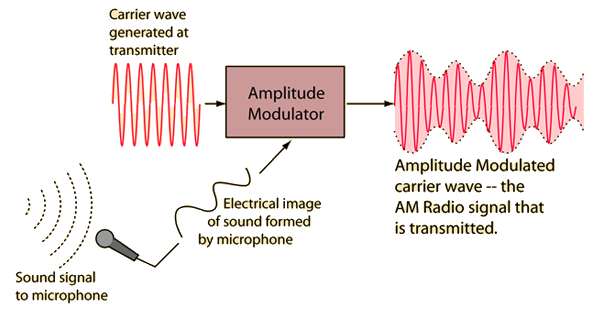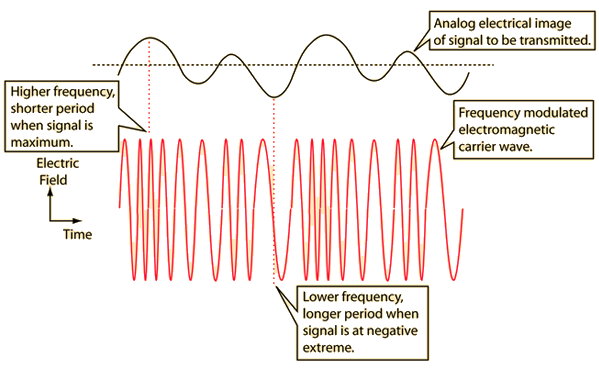AM Radio

AM radio uses the electrical image of a sound source to modulate the amplitude of a carrier wave. At the receiver end in the detection process, that image is stripped back off the carrier and turned back into sound by a loudspeaker.
When information is broadcast from an AM radio station, the electrical image of the sound (taken from a microphone or other program source) is used to modulate the amplitude of the carrier wave transmitted from the broadcast antenna of the radio station. This is in contrast to FM radio where the signal is used to modulate the frequency of the carrier.
The AM band of the Electromagnetic spectrum is between 535 KHz and 1605 kHz and the carrier waves are separated by 10 kHz.
A radio receiver can be tuned to receive any one of a number of radio carrier frequencies in the area of the receiver. This is made practical by transferring the signal from the carrier onto an intermediate frequency in the radio by a process called heterodyning. In a heterodyne receiver, most of the electronics is kept tuned to the intermediate frequency so that only a small portion of the receiver circuit must be retuned when changing stations.
| More detail on AM transmission | FM radio |
Sound reproduction concepts
Audio signal concepts
| HyperPhysics***** Sound | R Nave |

